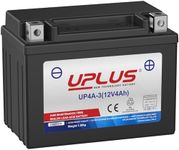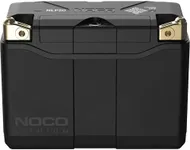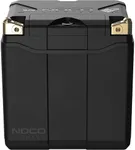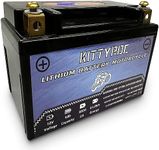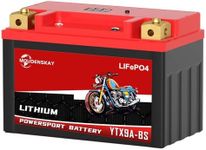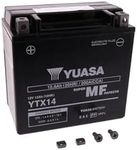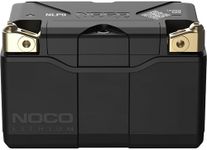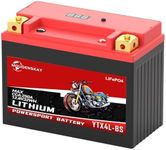Buying Guide for the Best Lithium Motorcycle Batteries
Choosing the right lithium motorcycle battery is crucial for ensuring your bike runs smoothly and reliably. Lithium batteries are known for their lightweight, long lifespan, and high performance compared to traditional lead-acid batteries. When selecting a lithium motorcycle battery, it's important to consider several key specifications to ensure you get the best fit for your motorcycle and riding needs.Battery Capacity (Ah)Battery capacity, measured in ampere-hours (Ah), indicates how much charge the battery can store. This is important because it determines how long the battery can power your motorcycle before needing a recharge. Lower capacity batteries (2-5 Ah) are suitable for smaller bikes or short rides, while higher capacity batteries (6-12 Ah or more) are better for larger motorcycles or longer trips. Choose a capacity that matches your bike's power requirements and your riding habits.
Cold Cranking Amps (CCA)Cold Cranking Amps (CCA) measure the battery's ability to start an engine in cold temperatures. This is crucial for ensuring your motorcycle can start reliably in various weather conditions. Batteries with lower CCA (50-100 CCA) are suitable for warm climates or smaller engines, while higher CCA (150-300 CCA or more) are necessary for colder climates or larger engines. Consider your local climate and the size of your motorcycle's engine when choosing the right CCA rating.
WeightWeight is an important factor because lithium batteries are significantly lighter than traditional lead-acid batteries, which can improve your motorcycle's performance and handling. Lighter batteries (1-2 kg) are ideal for racing or performance bikes, while slightly heavier batteries (2-4 kg) may be more suitable for touring or everyday use. Choose a weight that balances performance with practicality for your specific riding needs.
Size and FitThe physical size and fit of the battery are crucial to ensure it fits properly in your motorcycle's battery compartment. Lithium batteries come in various sizes, so it's important to check your bike's specifications and measure the available space. Ensure the battery dimensions match your motorcycle's requirements to avoid installation issues. If in doubt, consult your motorcycle's manual or a professional mechanic.
Lifespan and Cycle LifeLifespan and cycle life refer to how long the battery will last and how many charge/discharge cycles it can endure before its performance degrades. Lithium batteries typically have a longer lifespan and higher cycle life compared to lead-acid batteries. Look for batteries with a lifespan of 5-10 years and a cycle life of 1000-2000 cycles for the best value. Consider how often you ride and how long you plan to keep the battery when making your choice.
Charging TimeCharging time is the duration it takes to fully recharge the battery. Lithium batteries generally charge faster than lead-acid batteries, which is convenient for frequent riders. Charging times can range from 1-4 hours depending on the battery and charger. If you need quick turnaround times between rides, opt for a battery with a shorter charging time. Ensure your charger is compatible with the lithium battery to avoid damage and ensure efficient charging.
Safety FeaturesSafety features are important to protect both the battery and your motorcycle. Look for batteries with built-in protection against overcharging, overheating, and short-circuiting. These features help prevent damage and extend the battery's lifespan. Choose a battery with comprehensive safety features to ensure reliable and safe operation, especially if you ride frequently or in challenging conditions.

